The compulsion to capture: from cave walls to camera rolls
On photography as shield, solace, and our urge to depict the world
Many of us experience a compulsion to capture the world rather than simply be in it. Today I trace that impulse from ancient art to modern smartphones, examining what it reveals. Read on…
In this newsletter: Photographer Vivian Maier ⁕ Susan Sontag’s On Photography ⁕ prehistoric cave paintings ⁕ ethology’s ‘stereotype behavior’ ⁕ Sherry Turkle’s Alone Together
I don’t normally watch The Late Show, but I caught it one night a few months ago. They had a skit that was a parody TV commercial advertising a new phone, whose sole use was to take videos at concerts.
“We all know the best part of experiencing live music is filming the whole thing on your phone,” the voiceover went.
It cut to a shot from within the audience looking up at the stage. There was a sea of phones held aloft on arms, hundreds of tiny screens taking the same video.
Then came the kicker: “And when the concert’s over, just dump it in the trash! Let’s face it — you were never going to watch it anyway.”
It’s funny because it’s true. I used to see a lot of live music. Once, my phone storage ran out and a bunch of concert videos were the culprits. Videos I’d filmed and, of course, never watched again. Who wants to hear tinny phone-recorded music? During those concerts, I had to resist the urge to whip out my phone when the band performed my favorite songs, and I didn’t always succeed. There’s a strange fear of loss in the moment, as you see screens out around you. Wait, I don’t want to lose this moment forever!
And so you record, with a screen between you and the world.
We laugh at the absurdity of filming concerts we’ll never watch. Yet so many of us do it. Where does this urge come from? I found myself thinking about Vivian Maier, a woman who spent her life taking photographs. Like the phone you dump in the trash after the concert, she took more than one thousand rolls of film that she never developed. The film stayed spooled in its canisters, shielded from the light.
Vivian Maier, who was born in 1926 in New York City, earned a living as a nanny. She took photographs in her spare time, or on outings with the kids in her care. She almost never showed them to anyone. She was private, a loner, and had no intimates.
It’s only chance that we know about her. In old age she kept her photos, negatives, and undeveloped rolls in a storage unit. She missed payments and in 2007, the unit’s contents were seized and auctioned, dispersed among several buyers. Gradually, those buyers realized they had stumbled on something significant, and word spread online. Since then, over 150,000 photographs have been identified, spanning 1949 to the mid-1980s.
People who lived near the elderly Maier and were interviewed after she died had no sense of her extraordinary existence. In old age, she would sit on a park bench near her apartment for hours on end. “We knew her as a homeless woman,” one neighbor said, unaware that Maier had an apartment nearby, “who seemed, in many ways, neglected by the world.” Another neighbor remarked: “I was struck that she was sitting in a very public place, yet didn’t wish to talk to people.”
Yet Maier’s photographs reveal an intimacy with her subjects that verged on intrusive. She captured people sleeping on park benches. She photographed their trash. Earlier, when she spent time in France, her intrepid photography roused suspicion. “Because of her constant photographing,” biographer Pamela Bannos writes in Vivian Maier: A Photographer’s Life and Afterlife, “some people thought that she was a spy. A policeman once questioned Maier extensively about her activity.”
Reconstructing Maier’s French itinerary from her photographs and other evidence, Bannos found that she maintained an exacting pace, stopping only long enough to take photos before trudging on. She experienced her surroundings through the viewfinder.
It was in France that many of Maier’s lifelong themes first emerged: documenting other families’ celebrations and rituals, babies in their mothers’ arms, cemeteries and burials. She was not a landscape or nature photographer. People were her subjects.
This paradox is one reason Maier has captured so much attention. In her personal relations, she was distant and aloof. In her photography, she was up close and probing.
The undeveloped film strikes me as a major clue to all this. One thousand rolls is an extraordinary number. Based on the cameras she used, they contained somewhere between 12,000 and 36,000 images that were captured and never seen again.
Why do we take photos?
The “very activity of taking pictures is soothing, and assuages general feelings of disorientation,” Susan Sontag wrote in On Photography. The camera offers the photographer a barrier “between themselves and whatever […] they encounter.”
Perhaps Maier was drawn to capture humanity because she was deprived of it early on. Her father abandoned her, and her mother was emotionally unstable and unavailable. She never experienced the warmth that is the high point of family life, and from contemporaneous accounts, she was guarded and reclusive in adulthood. But in her photography, she was drawn ineluctably to people.
In the mid-twentieth century, Maier’s prominent box camera with its thick strap offered both a shield and a key. It set her apart as an observer rather than a participant, and it gave her a kind of access pass to examine people up close. Perhaps she felt more comfortable being around others with a camera, seeing them through a viewfinder.
Which is not to say that her photographs were merely documentary. Critics note her keen eye for detail and her expert deployment of the right technique for the circumstances. There are two main purposes of photography: creative expression, and documentation.
Perhaps these aims are more twined than we think.
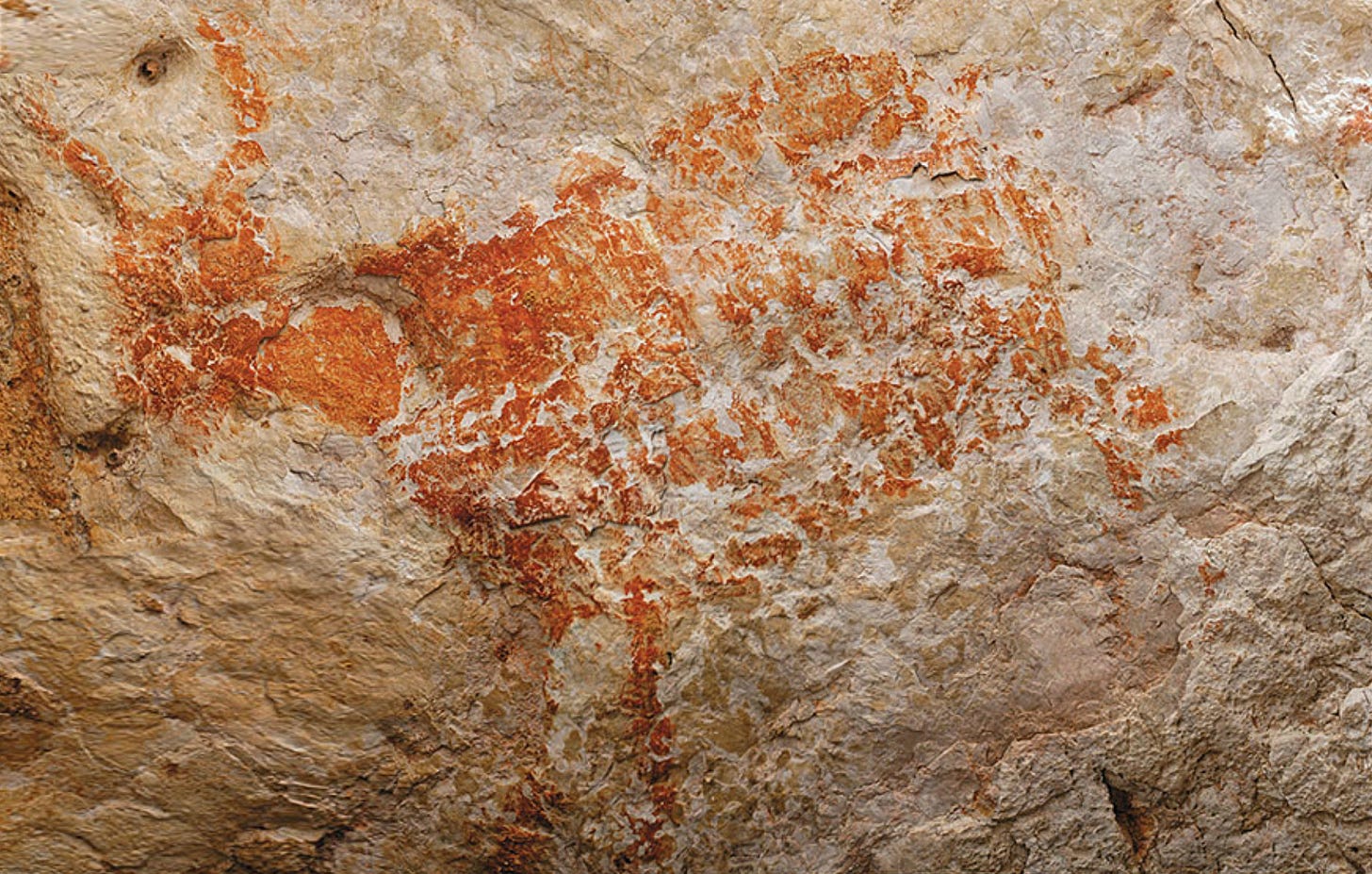
The earliest representational depictions (that is, of specific things rather than curlicues and zigzags) were made 40,000 to 45,000 years ago. In Indonesia, the Leang Bulu’ Sipong cave shows creatures hunting with spears and ropes. In Borneo, the Lubang Jeriji Saléh cave features paintings of cattle-like animals.
These cave paintings represent finely-honed techniques and required substantial human collaboration. They’re found in areas without natural light, requiring painters to have used lamps. Pigments were mixed elsewhere and applied using chewed twigs, feathers, and animal hair. Wads of moss served as primitive paint pads for stippling and spreading pigment.
In other words, they went to a lot of trouble to make these paintings. What impelled them to do it? These weren’t isolated efforts. Cave paintings have been found across Europe, Africa, Asia, Australia, and the Americas. They survived because they were protected from the elements. There must have been many more that were lost, scoured by wind and time.
For these painters, the cave removed them from direct experience. All that time they spent preparing the materials, scaling the rock walls, and painting by artificial light was time they didn’t spend “living in the moment,” to use an anachronistic phrase. Rather than gaze upon nature, they were holed up inside, recreating it. Sounds familiar, doesn’t it?
“The impulse to capture — to fix in language or in a photograph — life’s more elusive experiences as well as compulsive, can be transcendent,” writes Jayne Marshall in her quietly experimental memoir, A Line Drawn Or Printed: Six Routes Through Madrid. The urge that Marshall describes in 2025 is the same urge these early humans felt: to reproduce a scene, an experience. It’s an ancient impulse, one that must be etched in our biology.
A core belief of mine is that we aren’t very different from our predecessors thousands of years ago. The patterns of our behavior today can overlay ancient ones to provide clues to our deepest human design. Under this view, our changing tools — that is, technology — have evolved to let us more fully give way to our underlying compulsions.
Overreliance on our phones fits with this theory. It’s not that we are less motivated today to “live in the moment.” It’s that this concept barely made sense for most of our history. With rare exceptions, there was no alternative to living in the moment, so there was no need to ponder it. The demands of survival consumed much of our mental and physical energy. And the environment and people immediately in front of us provided our entertainment and intellectual stimulation.
Modern technology has turned this upside down. Now, the option to ignore the material world for virtual versions is present at every waking moment.
There’s a thread that extends from those first representational cave paintings to the images we capture but never return to. To me, it’s all evidence of an ingrained instinct to pin down what we see. To make the impermanent, permanent. An instinct that lies beyond the domains of reason and rationality.
When it emerged in our evolutionary past, this instinct didn’t need to be calibrated. There was no risk that it would overtake other aspects of our lives. That has changed, of course. The immense planning needed to represent bulls and hunting scenes in caves has been replaced with the instantaneous ability to capture what we see.
Now, those of us seeded with a greater instinct to document have no external buffer against it. It’s no wonder technology has overtaken our lives. The discourse around our digital overuse condemns modern humans as mindless, superficial, passive, and self-gratifying. Yet I wonder, are we all that different from our ancestors? If those cave painters were born today, would they spend their vacations behind a camera lens, anxious to record all they see?
Maybe it’s not technology, or modern values, that disconnect us from the world of experience. Maybe it’s how we’re built, and our current state is inevitable. We were always going to perfect the technology that allows us to indulge our compulsions without limit.
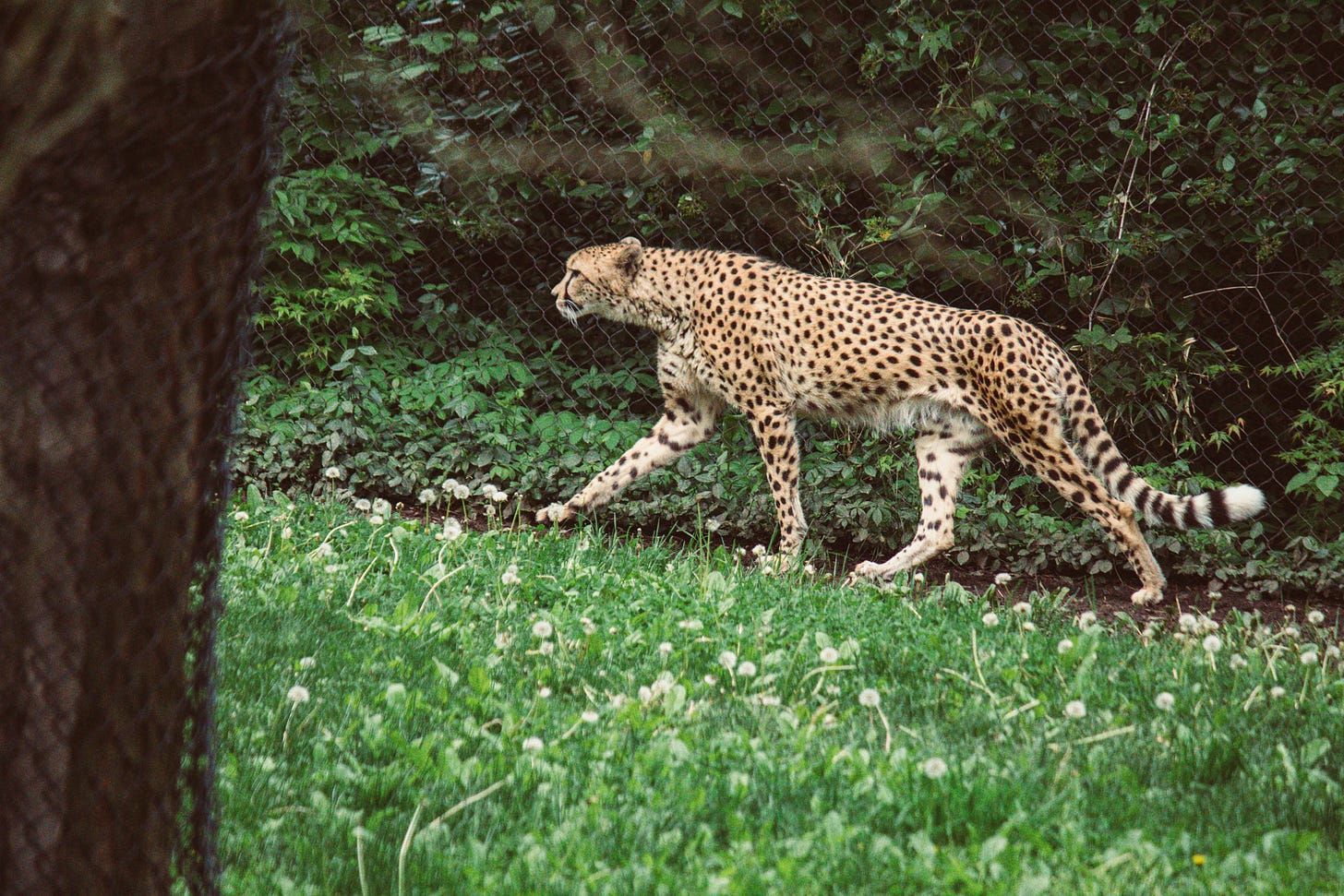
There’s a concept in ethology called stereotype behavior. These are repetitive behaviors with no obvious goal or function, though they may be relics of normal behavior that became maladaptive in changed settings. It’s like the big cats who pace back and forth in their zoo habitats, their roaming instincts having been diverted into pointless walking.
As Sherry Turkle explores in Alone Together, we can begin to feel overwhelmed and depleted by the lives technology makes possible. “Technology is seductive when what it offers meets our human vulnerabilities,” she writes. Though I would expand that notion not just to cover our vulnerabilities, but our predispositions, too.
If we decide that we don’t want to live with a screen between our eyes and the world, recognizing the underlying urge as ancient might offer both clarity and compassion. We are programmed to preserve what we see. But we weren’t programmed alongside today’s tools.
Maier lived much of her life behind a lens. Some concertgoers live behind their phones. The cave painter worked in semi-darkness. Each, in their own way, made a record of the world while holding that world at a distance. The risk today is that the ability to record is so omnipresent that it subsumes the state of experiencing. There’s no separation between the two. The cave painters saw, and then recorded. Now, we can do both at once.
We can overcome that programming — we do this in other areas — but it takes real effort.
Or, we can decide we don’t want to overcome it. Maier was a compulsive photographer; she experienced the world through a viewfinder. Who’s to say that was a better or worse way of being than any other? So long as we’re not harming anyone, the question isn’t what society approves. It’s what kind of life we want — and whether our impulses bring us nearer to living it.
Looking around, it’s clear that the urge to document varies from person to person. What’s your relationship with photography — do you feel compelled to capture everything, or are you unfettered by such urges? For me, the urge comes and goes according to an unknown rhythm. I’m curious to hear your experience.
Did you enjoy this post? Please support my work—for free.
1. Subscribe for regular updates and 2. Tap below to heart this post so others discover it.
Looking for more to read? Check out these archived posts:
Stay curious,
Laura


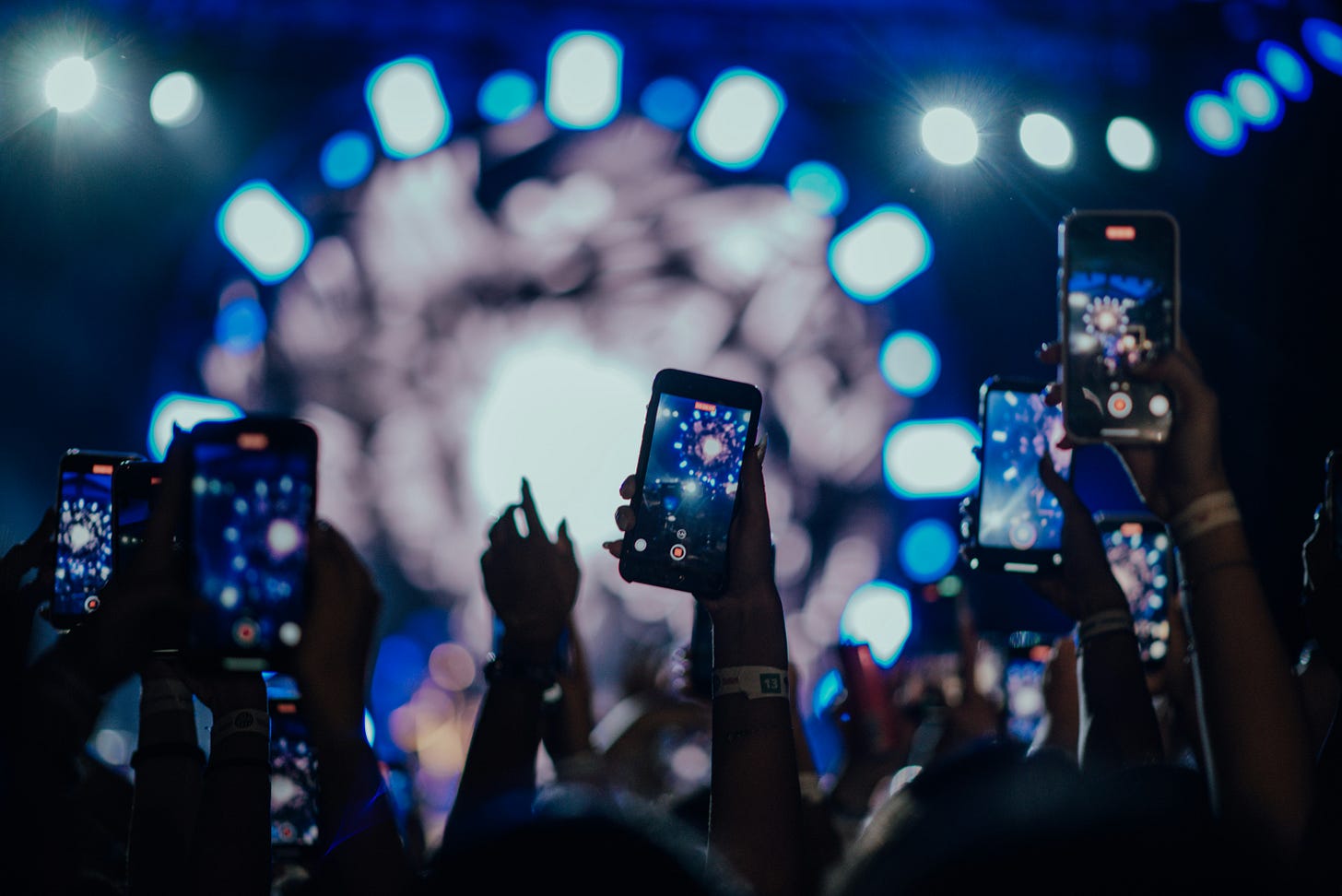
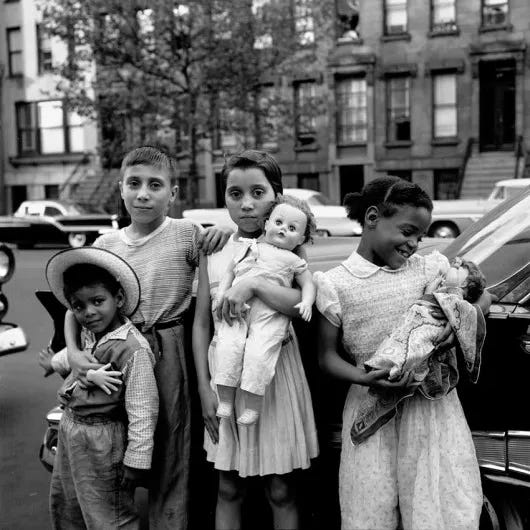
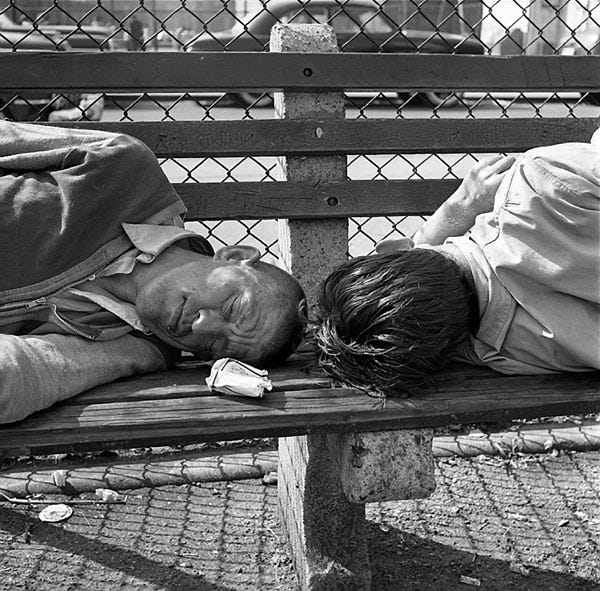
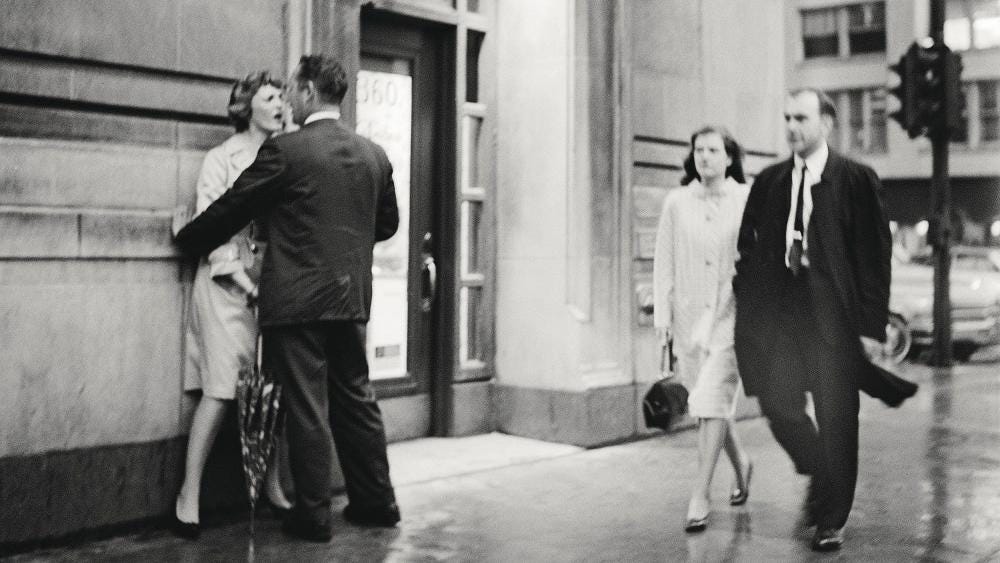
Fascinating article! Thank you for introducing me to this photographer, whom I had never heard of. I appreciated your signposting about your core belief about ancient impulses. I'm publishing an article tomorrow on underlying beliefs, so thank you for modeling that!
I try not to be a compulsive photographer. As an artist, I prefer to capture what's around me in a more time consuming way, which is more soothing for me and also results in more noticing and feeling...like the process of creating those cave paintings.
I want to anchor the experience in my physical body, not capture it in 30 seconds. I liked what you said about how technology offers us the seductive ability to do things so quickly that they don't deeply satisfy. Something to watch out for!
(My apologies for the lengthy comment, but there was a lot of good stuff here!)
This was really interesting, Laura. I'm recent years, I've definitely made a conscious effort to not take as many photos, and be more present, especially during events like Christmas and the kids opening presents, or on days out. I take a few, for maybe 5 minutes, then put the phone away. My mother-in-law photographs everything - when they look after the kids, she'll send me loads of photos of them doing an the same stuff they do every day afterwards 🤣🤣. My husband and his siblings are all perfectly trained to stop, smile, then carry on with whatever they were doing - I find it hilarious.